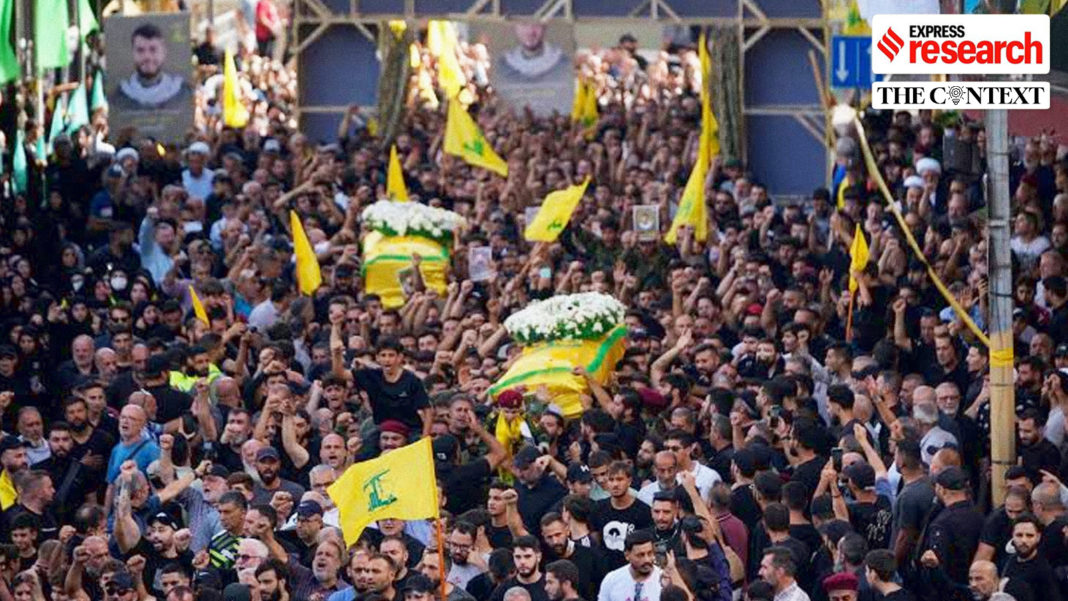The conflict between Israel and Hezbollah has deep roots in the history of South Lebanon, particularly the bloody and protracted struggle that lasted from 1985 to 2000. This period, often overshadowed by other Middle Eastern conflicts, was pivotal in shaping Hezbollah’s rise from a small militia into one of the region’s most powerful non-state actors.
In the 1960s and 1970s, displaced Palestinians, including militants affiliated with the Palestine Liberation Organization (PLO), began to settle in South Lebanon. Conflicts between the Palestinians and Christian militias sparked a civil war in Lebanon fuelled by Soviet support for the Arabs and American support for the Christian coalition. During the conflict, Palestinian groups used Southern Lebanon as a launching pad for attacks on northern Israeli towns. In an attempt to create a buffer zone to safeguard its northern border, Israel attacked southern Lebanon in 1978.
Four years later, Israel invaded Lebanon once again, marking a significant escalation. Israel’s objective was to drive the PLO out of Lebanon entirely, and this operation culminated in a full-scale invasion reaching Beirut.
By 1985, Israel had withdrawn from most of Lebanon but maintained a 15-20 km wide security zone in South Lebanon, designed to prevent cross-border attacks. This area was patrolled by the South Lebanon Army (SLA), a Christian militia allied with Israel. Yet the occupation, which was meant to be a short-term measure, transformed into a lengthy entanglement. It sparked resistance from various groups in Lebanon, particularly Hezbollah.
The emergence of Hezbollah
Hezbollah is a Shia Islamist movement formed in the early 1980s during the chaos of Lebanon’s civil war as a direct response to the Israeli occupation. The group was founded with significant support from Iran, which saw the opportunity to export its revolutionary ideals and challenge Israel’s dominance in the region.

According to Augustus Richard Norton, author of Hezbollah: A Short History (2007), the group’s initial goal was to resist Israeli occupation in South Lebanon. However, as it grew in strength, Hezbollah’s objectives expanded to include establishing an Islamic state in Lebanon, in line with the Iranian model and opposing Western influence in the region.
In his 2014 paper, Hezbollah and the Arab Spring, political scientist Joseph Alagha details how Hezbollah rapidly organised itself both militarily and socially. Alagha argues that the group’s ability to deliver social services such as healthcare and education won it substantial support among Lebanon’s marginalised Shia population, particularly in South Lebanon. This grassroots base allowed Hezbollah to grow from a militia into a broader political movement. Alagha notes that Hezbollah’s military wing employed guerrilla tactics, including ambushes, roadside bombs, and rocket attacks, to continually harass Israeli and South Lebanon Army forces.
The 1996 operation, known as ‘Grapes of Wrath’, became a key moment in this protracted war. Israel performed a military advance to suppress Hezbollah’s rocket fire but the campaign resulted in significant civilian casualties, particularly in the village of Qana, where over 100 Lebanese civilians were killed in a UN compound. This incident drew widespread international condemnation.
As Daniel Byman notes in his 2011 book A High Price: The Triumphs and Failures of Israeli Counterterrorism, Hezbollah’s use of civilian areas for military operations made it difficult for Israel to retaliate without causing collateral damage, leading to a public relations disaster for Israel and greater legitimacy for Hezbollah in the eyes of many Lebanese.
The conflict’s climax and Israel’s withdrawal
By the late 1990s, the Israeli presence in South Lebanon had become politically and militarily unsustainable. Israeli soldiers were regularly targeted by Hezbollah, and the Israeli public grew increasingly weary of the occupation. The conflict was no longer seen as essential to national security but rather as a drain on resources and lives. Hezbollah, leveraging its guerrilla tactics, turned the occupation into a war of attrition. The group’s resilience, despite Israel’s superior firepower, left the Israeli government with limited options.
In his article How Israel Bungled the Second Lebanon War (2007), Efraim Inbar emphasises that Hezbollah’s ability to impose high costs on Israeli forces led to the eventual Israeli withdrawal in 2000. Inbar argues that Israel’s decision to withdraw unilaterally, without a peace treaty, was a major psychological and strategic victory for Hezbollah, which was quick to claim that its resistance had succeeded in expelling Israel.
The withdrawal marked the end of a 15-year occupation but the scars of the conflict were far from healed. In the words of Norton, Hezbollah became “the spearhead of resistance against Israel,” which allowed it to dominate Lebanese politics and become a central actor in the region.
Ramifications of the South Lebanon conflict
The legacy of the South Lebanon conflict continues to shape the Middle East today. Hezbollah emerged from the conflict with not only greater military capacity but also an established political arm that has since become a powerful player in Lebanese governance.
Hezbollah’s success in South Lebanon also inspired other militant groups across the region. In Hezbollah: The Global Footprint of Lebanon’s Party of God (2013), Matthew Levitt describes how Hezbollah’s tactics, particularly its guerrilla warfare and rocket attacks, were later adopted by Palestinian groups in Gaza and other Iranian-backed militias.
The legacy of the South Lebanon conflict is not confined to Hezbollah alone. Israel’s experience in Lebanon profoundly shaped its military and political strategies. The trauma of the long occupation and the difficulty of fighting a non-state actor like Hezbollah contributed to Israel’s hesitancy to reoccupy Lebanese territory in future conflicts, preferring instead to rely on airstrikes and short-term incursions.
The 1985-2000 South Lebanon conflict, then, was not just a localised struggle between Israel and Hezbollah. It was a pivotal chapter in the broader Middle Eastern narrative, one that demonstrated the power of non-state actors to influence regional politics and security. The ramifications of this conflict continue to reverberate, shaping the volatile relationship between Israel and Hezbollah and leaving a lasting impact on Lebanon’s political landscape.


